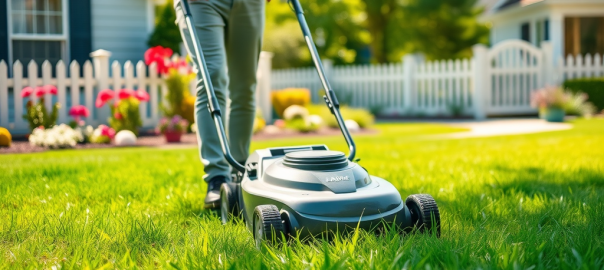Startling Fact: Did you know the right lawn mowing tips can boost grass thickness by up to 60%, leaving weeds and patchy spots in the dust? If you’re tired of battling brown patches, thinning blades, or stubborn weeds, you’re about to learn the simple, science-backed secrets to transform even the weariest yard into a lush green showpiece. With these expert strategies, your lawn will become the envy of the neighborhood—without extra hours of work.
Unlock a Greener Lawn: Surprising Facts and Essential Lawn Mowing Tips
Most homeowners don’t realize that implementing proven lawn mowing tips is the cornerstone of achieving a truly healthy lawn . From mowing at the correct height to switching up your mowing pattern, every detail matters. Scientific studies show that mowing lawns properly increases turf density and reduces the likelihood of weed invasion, promoting a thick, vibrant yard. Real-world examples demonstrate that after just a few weeks of implementing these best practices, you’ll see greener, fuller grass and fewer bare spots.
Practically speaking, the grass you have today is a reflection of your mowing habits. Simple tweaks—like keeping your mower blade sharp and never cutting more than a third of a grass blade’s length—help each blade recover quickly, form a strong root system, and outcompete weeds for nutrients and sunlight. Armed with these mowing tips , you can confidently turn neglected or average lawns into stunning landscapes, season after season.
Did you know? Proper lawn mowing tips can increase turf density by up to 60% and drastically reduce weed invasion.
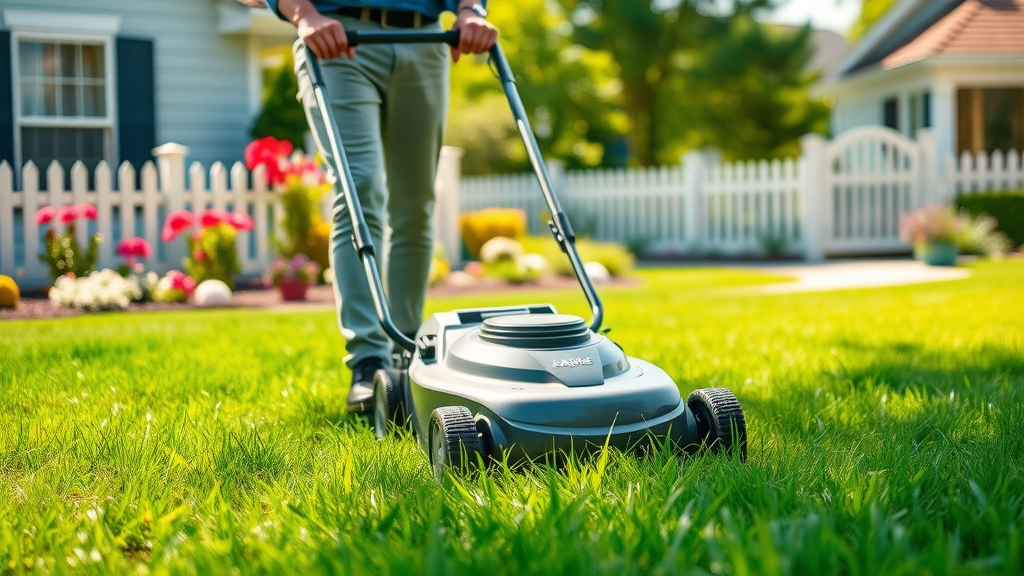
Setting the Foundation: Why Lawn Mowing Tips Matter for a Healthy Lawn
Every healthy lawn begins with understanding why the basics matter. Lawn mowing isn’t just about keeping the yard tidy—it’s about influencing grass health from the root up. Incorrect practices, such as mowing too short or too infrequently, can lead to stress, brown patches, and an open invitation for pests and weeds. On the other hand, smart lawn mowing tips encourage deep-rooted grass, improved nutrient absorption, and strong competition against invasive species.
Taking the time to learn and apply proper mowing habits ensures your lawn stays resilient throughout the growing season. Well-timed mower runs build up the root system, giving grass the energy to thrive in the heat, resist diseases, and recover from heavy use or weather extremes. Even minor adjustments—like alternating mowing patterns or adjusting mower blades—can dramatically enhance your yard’s visual appeal and health, making every mow count toward long-term results.
Understanding Lawn Mow Frequency for Optimal Growth
The frequency with which you mow your lawn is crucial for optimal growth and appearance. Regular lawn mow sessions, timed according to your grass’s growth rate and the season, can make all the difference. Mowing too infrequently allows grass to grow long and weak, resulting in floppy, thin blades that can suffocate healthy growth underneath. Conversely, mowing too often or too short, known as “scalping,” leaves your yard vulnerable to stress and rapid weed invasion.
- The impact of consistent mowing lawns: Consistency stimulates new shoots for a thicker lawn.
- How the right mowing tip shapes your yard’s health: Adjusting your efforts for weather, season, and grass type maximizes outcomes.
- Consequences of irregular lawn mowing: Soil compaction, thinning grass, and unsightly patches can all trace back to haphazard mowing routines.
For those looking to take their yard’s appearance to the next level, integrating mulching into your routine can further enhance soil health and moisture retention. Discover how professional mulching services can complement your mowing strategy and support a more resilient, vibrant lawn.
What You’ll Learn: Mastering Lawn Mowing Tips for Every Yard
- Understand how to mow your lawn for best results
- Apply key mowing tips suitable for all grass types
- Discover tricks for safe, efficient lawn mowing
- Implement strategies for a healthy lawn year-round
Lawn Mowing Basics: Best Practices for Every Yard
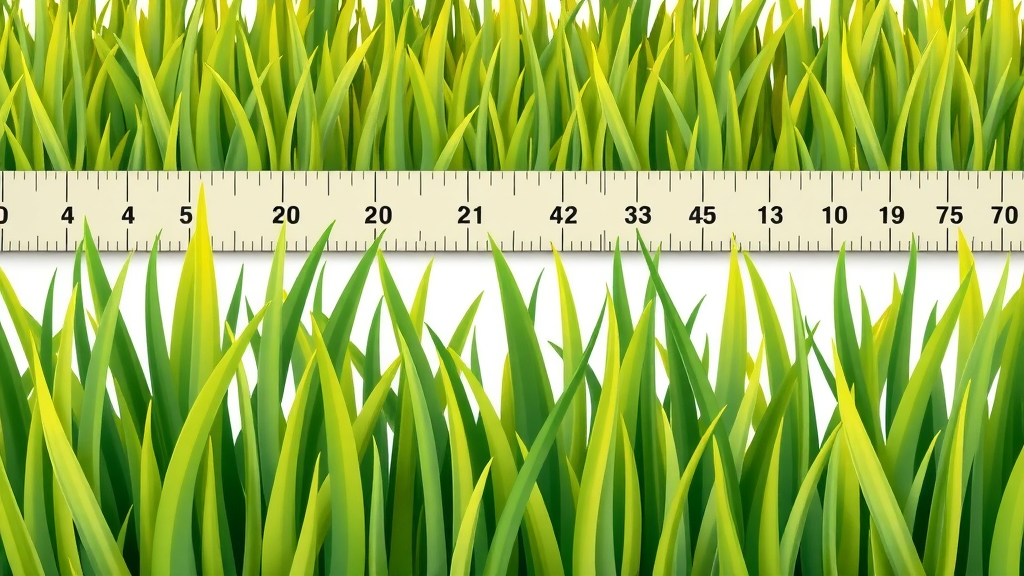
The Correct Lawn Mowing Height for a Healthier Lawn
One of the most underrated lawn mowing tips is setting the right grass height. Cutting too short—commonly called “scalping”—leaves your lawn exposed, while cutting too high can cause thatch and prevent healthy growth. As a rule of thumb, your mowing height should be tailored to your lawn’s specific grass type. Adjust your mower for each season, leaving grass a bit taller in the heat for shade and shorter in the cool for resilience.
Maintaining an optimal mowing height allows grass blades to maximize photosynthesis, build deeper roots, and shade out weed seedlings. For homeowners, this means less time spent on damage control and more time enjoying a lush, green yard. Whenever you mow, use this table to set your mower at the perfect height:
| Grass Type | Optimal Mowing Height | Notes |
|---|---|---|
| Kentucky Bluegrass | 2.5 – 3.5 inches | Leave longer during summer heat |
| Fescue (Fine & Tall) | 3 – 4 inches | Cut high for drought tolerance |
| Bermudagrass | 1 – 2 inches | Lower heights in strong sunlight |
| Zoysiagrass | 1 – 2.5 inches | Keep on the lower end for density |
| St. Augustine | 2.5 – 4 inches | Never scalp, prefer taller heights |
How Often Should You Mow Lawns for Peak Appearance?
The ideal number of times to mow your lawn depends on your grass growth rate, season, and weather. During the peak growing season (spring and early summer), plan to mow at least once per week, sometimes twice if grass is thriving. In cooler or dormant periods, you can space out mowing to every ten days or even two weeks.
Always remember the “one-third rule” for cutting—never remove more than one-third of the grass blade at a time. This approach reduces lawn stress, greens up grass faster, and minimizes thatch. As a tip, observe your lawn for signs it’s time to mow: if footprints linger, or blades look folded or uneven, it’s likely time to give your lawn the right trim.
Choosing the Right Lawn Mower for Your Property
Selecting the best lawn mower for your property can drastically influence efficiency and end results. For small yards, a modern push mower or electric reel mower provides precise cuts and easy maneuvering. Larger lots benefit from self-propelled or riding mowers, capable of handling thick grass or small slopes with less physical effort.
Key features to consider include mower cutting height adjustments, bagging or mulching ability, and sharpness of mower blades. A quality mower blade should feel sturdy, balanced, and easy to remove for sharpening—a must for every lawn enthusiast. Remember: even the best machine won’t make up for dull blades or poor maintenance. Invest in the right tool, keep it serviced, and your yard will look better after every mow.
Cut Like a Pro: Advanced Lawn Mowing Tips to Maximize Results
Keep Mower Blades Sharp for a Clean Cut
One of the most critical lawn mowing tips often overlooked by homeowners is regularly sharpening your mower blades. A sharp blade delivers a clean, precise cut, whereas a dull blade tears and shreds the grass, leaving ragged edges prone to browning and disease. Tidy cuts allow grass to recover quickly, building a stronger, denser lawn and reducing the likelihood of insect infestations or fungal problems.
Aim to sharpen mower blades at least twice per season. Inspect blades after mowing a lawn filled with sticks, stones, or thick growth. Replace any blade that is chipped or bent, as uneven blades can damage both the lawn and your mower. Don’t forget to check blade balance—vibration can ruin your mower and leave the grass uneven or scalped.
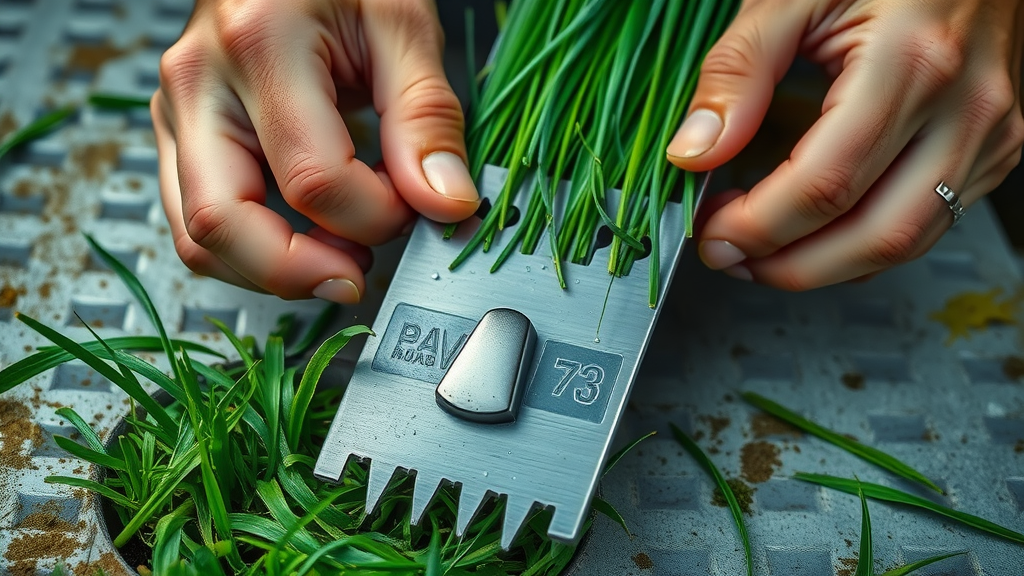
Avoid Mowing Wet Grass: Risks and Solutions
Mowing wet grass is a common mistake with consequences. Wet grass clumps quickly, sticking to mower blades and clogging discharge chutes. This resistance strains your lawn mower and leads to an uneven, torn cut. Additionally, cutting grass while wet can cause slippery conditions and dangerous footing for the mower operator.
To avoid damage, try to mow lawns only when the grass is completely dry. If you must mow and the lawn is slightly damp, set your mower blades higher and clean the underside of the deck frequently. If clumping occurs, use a rake to spread the clippings and prevent smothering the healthy lawn beneath. Save your mower—and your yard—by skipping the mow after heavy dew, rain, or watering.
Mastering the Mowing Pattern: Straight Lines, Stripes, and Beyond
Switching up your mowing pattern is a professional mowing tip that reduces soil compaction and adds visual appeal. Alternating directions prevents rut formation, especially in areas where mowing lawns routinely form tracks. Patterns like straight lines, checkerboards, or diagonals create eye-catching stripes and showcase a professionally maintained yard.
- Advantages of alternating your mowing pattern: Encourages upright blade growth and prevents ruts.
- Lawn mowing tip: When and how to create a professional finish: Use string or driveway edges as a straight guide, overlap each pass slightly, and alternate weekly.
- Mowing tip for corners and small spaces: Mow borders last, navigating tight turns slowly for precision.
Lawn Mowing Tips for Different Grass Conditions
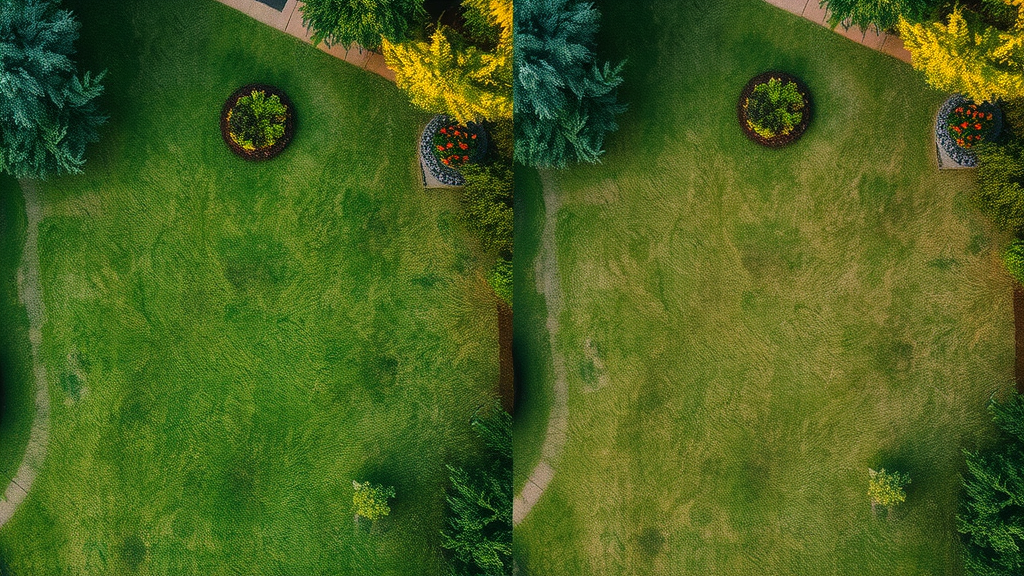
Dealing with Thick, Patchy, or New Lawns
Every lawn presents unique challenges, whether it’s thick and lush, sparse and patchy, or brand new. For dense lawns, use a sharp mower blade to avoid clogging and cut at the higher end of your recommended mowing height, allowing air and sunlight in. For patchy areas, avoid mowing too short, as this puts extra stress on weak spots and invites weeds to take hold. Instead, mow lightly and frequently; overseed bare spots as needed to encourage regrowth.
Brand new lawns require extra care—wait until new grass reaches at least one and a half times its target mowing height before the first cut. Set your mower on its highest setting for the initial mow, gradually renegotiating the height as the lawn matures. Patience and gentleness pay back with even, healthy growth and rapid establishment of deep roots across the yard.
Adapting Lawn Mowing for Drought or Heavy Rain
Weather extremes, like drought or heavy rain, demand flexibility in your lawn mowing routine. During dry conditions, mow your lawn higher and less frequently to conserve soil moisture and shade grass roots. Avoid mowing brown or dormant grass—wait until green shoots return. Water early in the morning before mowing so the yard is dry by the time you start, but only if it’s allowed in your local area.
After heavy rain, hold off on mowing until soil and grass are fully dry to prevent compaction and ruts. If you must cut tall grass after a wet spell, raise the mowing height and mow in stages over a few days, never removing more than a third of any grass blade at a time. This prevents shock and helps the lawn recover more quickly from both extreme wetness and aggressive cutting.
Lawn Mow Maintenance During Seasonal Changes
Seasonal transitions are key times to recalibrate your lawn mowing tip tactics. In spring, ramp up mowing as growth accelerates, while in fall, gradually lower the cutting height for the last few mows to minimize snow mold or disease risks over winter. During summer, keep grass taller for sun-shielding and drought resistance—adjust your mower as needed.
Consistent mower maintenance is equally crucial. Clean mower blades after every lawn mow to prevent disease spread, fuel and lubricate moving parts before and after the season, and store your lawn mower in dry conditions. These small practices sustain a healthy lawn , no matter the calendar month, and prepare your yard for a triumphant return each spring.
Key Dos and Don’ts: The Essential List of Lawn Mowing Tips
- Do—Use sharp mower blades: Sharp blades leave grass even and less vulnerable to disease.
- Don’t—Cut too short (scalping): Removing too much blade reduces resilience and leaves lawns stressed.
- Do—Change up your mowing pattern: Prevents soil compaction and stimulates healthy root growth.
- Don’t—Mow in the heat of the day: Reduces lawn stress; mow morning or late afternoon instead.
- Do—Recycle grass clippings when possible: Mulched clippings return valuable nutrients to the soil.
“Mowing with a dull blade not only shreds your grass, but also opens the door to pests and disease.” — Turf Expert, Scapes Unlimited LLC
What is the best technique for mowing the lawn?
The most effective technique for mowing lawns involves using sharp mower blades, never cutting more than one third of a grass blade’s height per mowing, and alternating mowing patterns regularly. This trio of techniques encourages even growth, helps grass recover faster, and prevents soil compaction, all critical for a vibrant, healthy lawn.
What is the 1 3 rule for mowing?
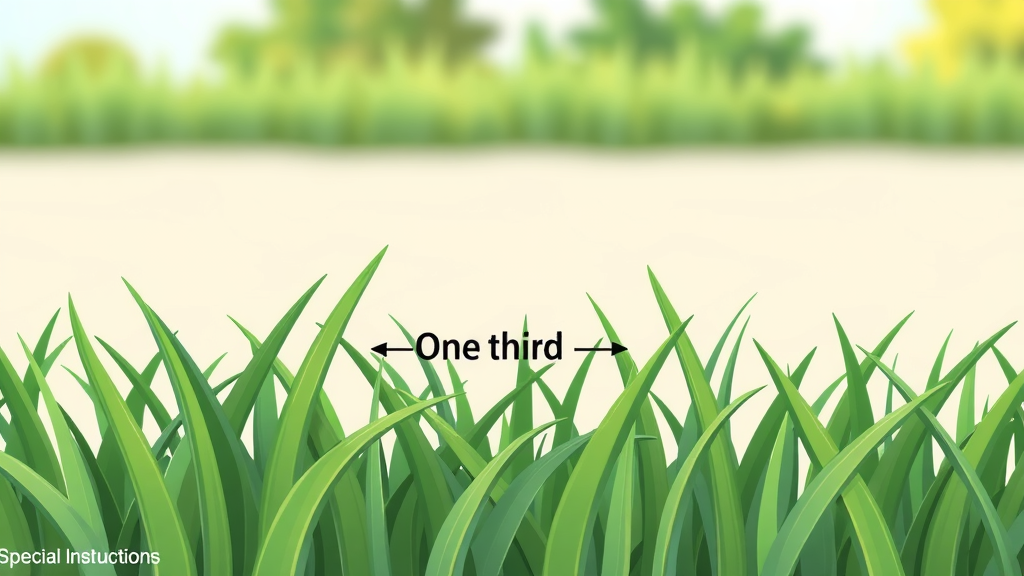
The 1/3 rule is a must-know among lawn mowing tips : Never remove more than one third of the grass blade length during a single mowing. This protects grass from undue stress, keeps it greener, and helps each blade retain its food-producing leaf area, making your turf more resilient and less disease-prone.
What is the best pattern to mow a lawn?
The best pattern for mowing lawns is to alternate your mowing direction—go north-south one week and east-west the next. Popular options include stripes, checkerboards, and diagonals. Changing the pattern up with each mow avoids soil compaction, encourages vertical growth, and creates that coveted, professional-finish curb appeal.
Should you edge your lawn every time you mow?
While edging every mow isn’t necessary, doing so every two to three mowing sessions keeps lawn borders crisp and defined. Edging around sidewalks and garden beds boosts curb appeal and maintains strong, weed-free boundaries, especially along concrete or stone edges where grass can creep unwantedly.
Grass Clippings: To Bag or Not to Bag? Essential Lawn Mowing Tips
Benefits of Mulching Clippings vs. Collection
One of the best eco-friendly lawn mower tips is to recycle your grass clippings instead of bagging. Mulched clippings decompose quickly, returning up to 25% of the lawn’s annual fertilizer needs back into the soil. They help retain soil moisture, reduce evaporation, and protect the delicate grass roots from sunburn.
Bagging clippings may be necessary if your lawn is overgrown, diseased, or if local ordinances require it. Otherwise, leaving clippings on your lawn is faster, less wasteful, and supports healthy grass growth year-round. Remember: short, fine clippings mulch best, while long or wet piles should be bagged to avoid thatch or smothering issues.

Safety and Lawn Care: Protecting Yourself and Your Healthy Lawn
- Always wear appropriate protective gear—closed-toe shoes, safety glasses, and ear protection—when running your lawn mower .
- Clear the yard of debris, rocks, and toys before mowing to prevent accidents and mower damage.
- Dispose of lawn mow debris safely; compost healthy clippings, but bag and remove diseased or heavily weeded materials.
FAQs on Lawn Mowing Tips for Homeowners
- Is it bad to mow your lawn in high temperatures? Mowing when it’s hot stresses grass and can burn the turf. Early morning or late afternoon is best to avoid wilting and heat shock.
- Can lawn mowing help prevent weeds? Yes, frequent mowing at the correct height encourages dense turf, which crowds out many common lawn weeds through competition for light and nutrients.
- When is the best time of day for mowing lawns? Mowing in mid-morning or late afternoon is ideal—grass is dry, but the sun is not too intense, reducing stress and disease risk.
- How short should you mow for the last cut of the season? For the last lawn mow, lower the cutting height by 0.5 to 1 inch (but still obey the 1/3 rule). This prevents snow mold and prepares grass for winter dormancy.
Transform Your Yard with Lawn Mowing Tips from the Pros
Review: Key Takeaways for Healthy Lawn Maintenance
- Follow the 1/3 rule with every lawn mow
- Always use sharp mower blades and adjust cutting height by season and grass type
- Change mowing pattern often to prevent ruts and soil compaction
- Mulch grass clippings whenever possible to nourish your healthy lawn
Start Loving Your Lawn: Partner with Scapes Unlimited LLC for Year-Round Care
Is your lawn looking tired, patchy, or just plain uncooperative? Let Scapes Unlimited LLC take the hassle out of lawn care and maintenance. From regular mowing and fertilization to weed control and seasonal cleanups, we’ve got your yard covered year-round. 🌱 Contact us today and give your lawn the expert care it deserves.
If you’re inspired to elevate your entire landscape beyond just the grass, there’s a world of creative possibilities waiting. Explore the full range of flower bed design and installation services to add vibrant color, texture, and year-round interest to your property. Combining expert mowing with thoughtfully designed flower beds can transform your yard into a true outdoor retreat. Take the next step and discover how a holistic approach to landscaping can bring out the best in your home’s curb appeal and outdoor enjoyment.
To further enhance your lawn care knowledge, consider exploring these authoritative resources:
- “Mowing and Trimming a Lawn” ( hgtv.com )
This guide offers comprehensive insights into proper mowing techniques, including the importance of the one-third rule and the benefits of mowing when the grass is dry.
- “Lawn Mowing 101: 5 Tips You Need to Know” ( greenviewfertilizer.com )
This article provides essential tips such as adhering to the one-third rule, determining the correct mowing height for different grass types, and the significance of mowing when the grass is dry.
By delving into these resources, you’ll gain a deeper understanding of effective lawn mowing practices, ensuring your yard remains lush and healthy.

